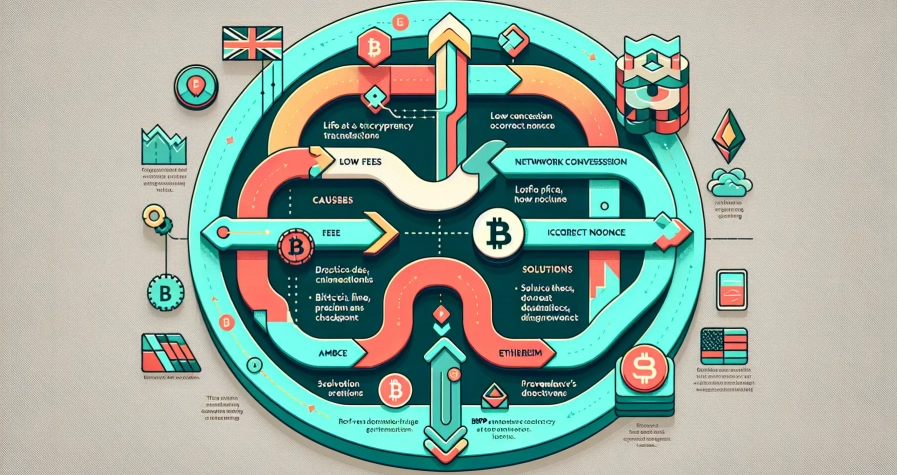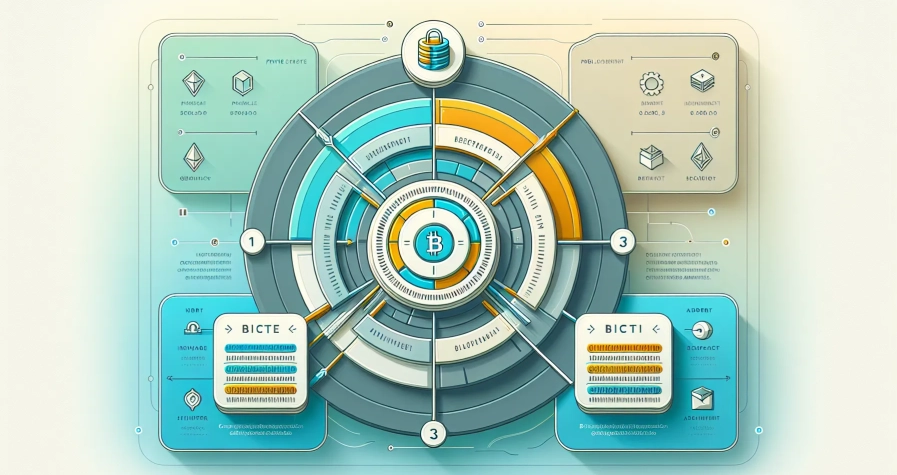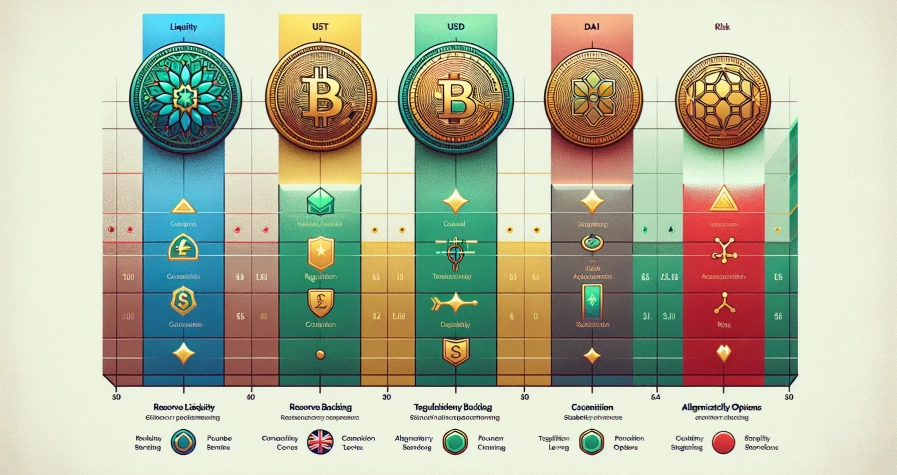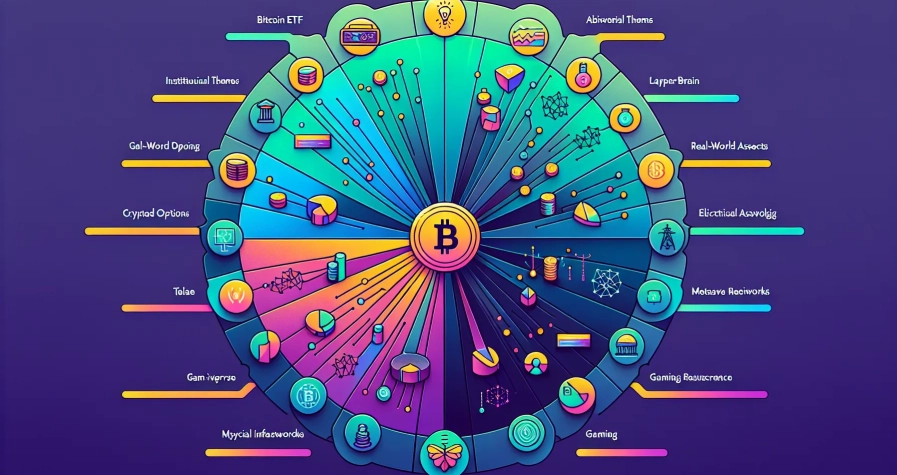You’ve probably wondered why sending cryptocurrency isn’t free like traditional bank transfers sometimes are. Every time you move crypto from one wallet to another, you’ll encounter something called a gas fee – and these costs can vary dramatically from pennies to hundreds of pounds.
Gas fees are essentially the price you pay to have your transaction processed on a blockchain network. Think of them as the fuel that powers your crypto transactions, much like petrol powers your car. Without paying these fees, your digital currency would remain stuck in your wallet indefinitely.
Understanding gas fees becomes crucial as crypto adoption grows and more people use decentralised applications daily. Whether you’re buying your first Bitcoin or exploring complex DeFi protocols, you’ll need to grasp why these fees exist and how they’re calculated to make informed decisions about your crypto activities.
What Are Gas Fees in Cryptocurrency?
Gas fees represent computational costs required to execute transactions and smart contracts on blockchain networks. You pay these fees to compensate network validators for processing your cryptocurrency transactions and maintaining network security.
Ethereum popularised the term “gas” when describing transaction costs, though each blockchain network uses different terminology for similar concepts. Bitcoin charges transaction fees, Binance Smart Chain uses gas fees, and Solana implements transaction fees with different pricing mechanisms.
Your gas fee calculation depends on three primary factors:
- Network congestion – Higher demand increases prices during peak usage periods
- Transaction complexity – Simple transfers cost less than complex smart contract interactions
- Priority level – Faster processing requires higher fee payments
- Gas price fluctuations – Market-driven pricing affects total costs
How Gas Fees Function on Different Networks
Ethereum gas fees operate through a base fee plus priority fee structure since the London Upgrade in August 2021. You pay a base fee that gets burned (permanently removed) plus a priority tip for miners or validators.
| Network | Fee Structure | Average Cost Range | Payment Token |
|---|---|---|---|
| Ethereum | Base + Priority | £5-£50+ | ETH |
| Bitcoin | Satoshi per byte | £1-£15 | BTC |
| Polygon | Gas limit × Gas price | £0.01-£0.50 | MATIC |
| Solana | Fixed + Computational | £0.001-£0.01 | SOL |
Alternative blockchains like Polygon and Avalanche offer significantly lower gas fees compared to Ethereum’s mainnet. These Layer 2 solutions and alternative chains achieve cost reduction through different consensus mechanisms and network architectures.
Why Gas Fees Exist
Gas fees prevent spam attacks on blockchain networks by requiring economic commitment for each transaction. Without fees, malicious actors could overwhelm networks with countless meaningless transactions, rendering the system unusable.
Validators receive gas fees as compensation for their computational work and network maintenance. These payments incentivise participation in network security whilst covering operational costs including electricity and hardware expenses.
Smart contracts consume more gas than simple transfers because they execute multiple operations. Complex DeFi transactions involving token swaps, liquidity provision, or NFT minting require significantly higher gas payments than basic cryptocurrency transfers.
How Gas Fees Work on Blockchain Networks
Gas fees represent computational effort required to validate and execute your transactions or smart contracts. You pay these fees by multiplying gas used (units representing transaction complexity) by gas price (cost per unit, denominated in native token fractions like Gwei for Ethereum).
Transaction Validation Process
Your transaction enters a validation process when you initiate it on the blockchain network. Validators verify your transaction details and bundle it into a block alongside other pending transactions. You pay gas fees regardless of whether your transaction succeeds or fails because validators expend computational resources during the verification process.
Validators receive your gas fees as compensation for their computing power and operational costs. Higher fees you set incentivise validators to prioritise your transaction over others in the queue. This prioritisation mechanism allows you to control transaction speed by adjusting the gas price you’re willing to pay.
The network processes your transaction through cryptographic verification before adding it to the blockchain permanently. Validators stake their reputation and resources to maintain network integrity whilst earning gas fees from users like you.
Network Congestion and Demand
Blockchain networks operate with limited block space creating competition amongst users for transaction inclusion. You experience higher gas fees when many transactions compete simultaneously because users bid higher fees for faster processing during peak demand periods.
Network congestion occurs when transaction volume exceeds the blockchain’s processing capacity. During these periods you face increased costs as the fee market becomes competitive with users outbidding each other for priority placement.
Conversely you pay lower gas fees during periods of reduced network activity when block space becomes more available. This dynamic pricing mechanism ensures efficient resource allocation whilst maintaining network security through economic incentives.
| Network Condition | Gas Fee Impact | User Experience |
|---|---|---|
| High congestion | Increased fees | Slower processing unless higher fees paid |
| Low congestion | Reduced fees | Faster processing at standard rates |
| Peak usage times | Premium pricing | Competition for block space |
| Off-peak periods | Standard rates | Readily available processing capacity |
Factors That Influence Gas Fee Costs
Gas fees fluctuate based on several key variables that determine the computational resources your transaction requires and market conditions at the time of execution. Understanding these factors helps you optimise transaction timing and costs.
Network Traffic and Peak Times
Network congestion directly affects gas fee pricing as thousands of transactions compete for limited block space simultaneously. During peak periods such as major NFT launches or significant decentralised finance events, gas fees on Ethereum can surge dramatically because users bid higher prices to prioritise their transactions[1][2][4][5].
Peak traffic occurs during specific times when demand exceeds the network’s processing capacity. Major cryptocurrency market movements, popular NFT drops, and DeFi protocol launches create sudden spikes in transaction volume. These events can increase gas fees by 300-500% compared to standard rates as users compete for faster processing.
Off-peak periods typically offer lower gas fees when fewer transactions occupy the network’s capacity. Weekends and early morning hours in major time zones often present more favourable fee structures for non-urgent transactions.
Transaction Complexity
Transaction complexity determines the computational resources required to execute your operation on the blockchain network. Simple ETH transfers require approximately 21,000 gas units, representing the minimum computational effort needed for basic value transfers[1][4][5].
Smart contract interactions demand significantly more gas units due to their complex computational requirements. Decentralised application transactions, token swaps, and multi-signature operations can require 50,000 to 200,000 gas units or more depending on the contract’s complexity.
Advanced operations such as deploying new smart contracts or executing complex DeFi protocols can consume 500,000+ gas units. These transactions involve multiple computational steps, data storage, and contract execution that require substantial network resources.
Gas Price Settings
Gas price represents the amount you’re willing to pay per computational unit, measured in gwei (one billionth of an ETH). You control this variable to influence transaction speed and total costs[1][5].
The Ethereum EIP-1559 upgrade introduced a base fee that adjusts automatically based on block demand plus an optional priority fee (tip) for faster processing[1]. Base fees increase when blocks exceed 50% capacity and decrease when usage falls below this threshold.
Priority fees allow you to incentivise validators to process your transaction ahead of others in the queue. Higher priority fees result in faster confirmation times, whilst lower fees may cause delays during congested periods. Setting gas prices below network standards risks transaction failure or extended waiting periods.
Gas fee calculation follows this formula: Gas fee = Gas units × Gas price. For example, a simple transfer requiring 21,000 gas units at 50 gwei equals 0.00105 ETH in total fees[4][5].
Different Types of Gas Fees Across Blockchains
Gas fee structures vary significantly between blockchain networks, each implementing distinct mechanisms to price transactions and compensate validators. Understanding these differences helps you choose the most cost-effective network for your specific needs.
Ethereum Gas Fees
You encounter the most sophisticated fee structure on Ethereum, where gas measures the computational effort needed for transaction execution. Gas fees are denominated in gwei (1 gwei = 10^-9 ETH), providing precise pricing for network operations.
Ethereum’s fee calculation involves two primary components:
- Gas price: The amount you’re willing to pay per gas unit, directly influenced by network demand and available block space
- Gas limit: The maximum gas units allocated for your transaction, reflecting its computational complexity
Following the EIP-1559 upgrade in 2021, Ethereum introduced a dynamic fee structure comprising a base fee that automatically adjusts based on network congestion and an optional priority fee (tip) that incentivises validators to process your transaction faster. Simple ETH transfers typically consume 21,000 gas units, whilst complex smart contract interactions can require 50,000 to over 500,000 gas units.
Despite these improvements, Ethereum gas fees remain relatively high during peak demand periods due to limited block capacity, with costs ranging from £5 to over £100 per transaction during network congestion.
Alternative Blockchain Networks
You’ll find more economical transaction costs on alternative blockchain networks that employ different consensus mechanisms and architectural designs. These networks often prioritise scalability and affordability over Ethereum’s security-first approach.
Binance Smart Chain operates with significantly lower fees, typically ranging from £0.10 to £1.00 per transaction, achieved through higher throughput and a different validator mechanism. The network maintains compatibility with Ethereum whilst offering faster processing times.
Solana provides some of the lowest transaction costs in the blockchain space, with average fees of approximately £0.001 per transaction. This efficiency stems from its unique Proof of History consensus mechanism combined with Proof of Stake validation.
| Network | Average Fee Range | Consensus Mechanism | Transaction Speed |
|---|---|---|---|
| Ethereum | £5 – £100+ | Proof of Stake | 15 TPS |
| Binance Smart Chain | £0.10 – £1.00 | Proof of Staked Authority | 160 TPS |
| Solana | £0.001 | Proof of History + Proof of Stake | 65,000 TPS |
| Polygon | £0.001 – £0.01 | Proof of Stake | 7,000 TPS |
These alternative networks achieve lower costs through various technical approaches, including higher transaction throughput, different validator reward structures, and optimised consensus algorithms. However, they often trade some degree of decentralisation for improved efficiency and reduced costs.
Why Gas Fees Are Necessary for Crypto Transactions
Gas fees serve essential functions that keep blockchain networks secure and operational. Understanding these purposes helps you appreciate why every crypto transaction carries a cost.
Network Security and Spam Prevention
Gas fees protect blockchain networks from malicious attacks and unwanted congestion by requiring economic commitment for every transaction. When you submit a transaction you must pay these fees regardless of whether your transaction succeeds making it expensive for attackers to flood networks with spam.
The 2022 Solana spam attack demonstrates this protection mechanism in action. Attackers paid over £800,000 in fees attempting to disrupt the network highlighting how gas fees create financial barriers against malicious activity. Without these costs bad actors could easily overwhelm networks with thousands of meaningless transactions.
Network spam prevention works through economic deterrence. Each transaction costs computational resources and storage space on the blockchain. By charging gas fees networks ensure that users only submit legitimate transactions they’re willing to pay for. This mechanism maintains blockchain integrity whilst preventing network congestion that would slow down legitimate users’ transactions.
Transaction costs also prevent denial-of-service attacks where malicious users attempt to make networks unusable. The financial burden of sustained attacks becomes prohibitive when each transaction requires payment making such attempts economically unfeasible for most attackers.
Miner and Validator Compensation
Gas fees compensate the individuals and entities who maintain blockchain networks by validating transactions and securing the network infrastructure. When you pay gas fees you’re directly rewarding miners (in proof-of-work systems) or validators (in proof-of-stake systems) for their computational work and energy expenditure.
Validators dedicate significant resources to transaction verification including powerful computers electricity and time. Your gas fees provide financial incentives that motivate these network participants to continue their essential work. Without adequate compensation validators might leave the network reducing security and processing capacity.
The compensation structure varies across different blockchain networks. Bitcoin miners receive transaction fees plus block rewards for successfully mining blocks. Ethereum validators earn gas fees alongside staking rewards for validating transactions and maintaining network consensus. These rewards cover operational costs including hardware depreciation electricity bills and network infrastructure maintenance.
Higher gas fees during peak network demand reflect increased competition for validator attention. When you offer higher fees validators prioritise your transaction because they earn more compensation. This market-driven system ensures that network resources get allocated efficiently whilst maintaining validator participation through profitable operations.
How to Reduce Your Gas Fees
You can significantly reduce your gas fees by implementing strategic approaches that leverage network dynamics and alternative solutions. These methods help you maintain cost-effectiveness whilst ensuring your transactions complete successfully.
Timing Your Transactions
Timing your transactions strategically reduces gas fees by capitalising on network demand patterns. Gas fees typically reach their lowest points during off-peak hours when fewer users compete for block space on the network.
Monitor network congestion before submitting transactions to identify optimal timing windows. Weekend periods often present lower fees compared to weekdays, as business activity decreases and fewer users interact with decentralised applications. Late evening hours in UTC timezone frequently offer reduced costs, particularly between 2 AM and 6 AM UTC when global trading activity diminishes.
Track gas fee trends using monitoring tools like GasTracker or ETH Gas Station to observe real-time pricing data. Set gas fee alerts to notify you when prices drop below your preferred threshold, allowing you to execute transactions during favourable conditions. Consider delaying non-urgent transactions such as NFT transfers or DeFi position adjustments until fees decrease naturally.
Choosing the Right Blockchain
Alternative blockchains offer substantially lower transaction costs compared to Ethereum’s mainnet due to different consensus mechanisms and architectural designs. These networks process transactions more efficiently whilst maintaining security standards suitable for various use cases.
Solana transactions average approximately £0.001 per operation, making it cost-effective for frequent trading and small-value transfers. Avalanche provides fees ranging from £0.01 to £0.10, offering faster transaction finality than Ethereum. Polygon maintains costs between £0.001 and £0.05 for most operations, providing Ethereum compatibility with reduced expenses.
Consider your specific requirements when selecting blockchains: Solana excels for high-frequency trading, Avalanche suits complex DeFi interactions, and Polygon works well for gaming and NFT applications. Verify that your desired applications and tokens are available on your chosen network before transferring funds. Research bridge costs between networks to ensure total transaction expenses remain lower than Ethereum mainnet alternatives.
Using Layer 2 Solutions
Layer 2 solutions process multiple transactions off Ethereum’s main chain before batching them together, dramatically reducing individual transaction costs whilst maintaining network security. These solutions inherit Ethereum’s security properties through cryptographic proofs and periodic settlement processes.
| Layer 2 Solution | Average Fee Range | Transaction Speed | Primary Use Cases |
|---|---|---|---|
| Arbitrum | £0.10-£2.00 | 1-2 seconds | DeFi, DEX trading |
| Optimism | £0.15-£3.00 | 2-3 seconds | NFTs, gaming |
| zkSync | £0.05-£1.50 | Instant | Payments, transfers |
| Polygon | £0.001-£0.05 | 2 seconds | Gaming, social apps |
Bridge your assets to Layer 2 networks through official bridges or trusted platforms like Hop Protocol or Synapse. Calculate bridging costs alongside transaction fees to determine overall savings, as moving assets between layers incurs additional expenses. Optimistic rollups like Arbitrum and Optimism require 7-day withdrawal periods to return to Ethereum mainnet, whilst zkSync enables faster exits through zero-knowledge proofs.
Utilise native Layer 2 applications to maximise benefits: Uniswap on Arbitrum for trading, OpenSea on Polygon for NFTs, and Aave on Optimism for lending. Keep sufficient native tokens (ETH on Arbitrum/Optimism, MATIC on Polygon) in your Layer 2 wallet to cover transaction fees without additional bridging requirements.
The Future of Gas Fees in Cryptocurrency
Gas fees continue evolving through technological innovations and competitive pressures within the blockchain ecosystem. Network upgrades and alternative solutions actively address the scalability challenges that drive high transaction costs, particularly during periods of network congestion.
Layer 2 scaling solutions represent the most immediate advancement in reducing gas fees. Rollups and similar technologies process transactions off the main blockchain before bundling them for final settlement. Arbitrum and Optimism demonstrate this approach by reducing Ethereum transaction costs by 90-95% while maintaining network security. Polygon’s commitment bridge processes over 3 million transactions daily at an average cost of £0.05 per transaction, showcasing the practical benefits these solutions offer.
Consensus mechanism improvements continue transforming how networks handle transactions. Ethereum’s transition to Proof-of-Stake reduced energy consumption by 99.95% and created more predictable fee structures. Future upgrades like sharding promise to increase network capacity from 15 transactions per second to potentially 100,000 transactions per second, directly impacting gas fee calculations through improved throughput.
Competitive blockchain architectures drive innovation across the ecosystem. Solana’s parallel processing capabilities maintain average fees below £0.001 even during high demand periods. Avalanche’s subnet architecture allows customised fee structures for specific applications, whilst Cardano’s UTXO model provides predictable transaction costs regardless of network congestion.
| Scaling Solution | Current Average Fee | Transaction Speed | Capacity Improvement |
|---|---|---|---|
| Ethereum Layer 2 | £0.50-£2.00 | 2-5 seconds | 100x throughput |
| Solana | £0.001 | 400ms | Native high speed |
| Polygon | £0.05 | 2 seconds | 65,000 TPS |
| Avalanche | £0.10-£0.50 | 1-2 seconds | 4,500 TPS |
Cross-chain interoperability protocols reduce reliance on expensive networks. Bridge technologies enable asset movement between blockchains without requiring users to remain locked into high-fee environments. Cosmos’ Inter-Blockchain Communication protocol and Polkadot’s parachain architecture facilitate seamless value transfer across different networks, giving you more options for cost-effective transactions.
Regulatory developments influence gas fee structures as institutional adoption increases. Central bank digital currencies and regulated stablecoins require predictable transaction costs for commercial applications. This demand pressures blockchain networks to implement more stable fee mechanisms rather than purely market-driven pricing models.
Infrastructure improvements at the validator level contribute to fee reduction. Professional staking services and improved hardware efficiency reduce operational costs for network validators. These savings potentially translate to lower baseline fees as competition increases among validation services.
The convergence of these technological advances creates a future where gas fees become increasingly predictable and affordable, removing significant barriers to mainstream cryptocurrency adoption whilst maintaining the security and decentralisation principles that define blockchain networks.
Conclusion
Gas fees might seem frustrating at first but they’re the price you pay for participating in a decentralised financial system. They keep networks secure whilst enabling you to send crypto anywhere in the world without traditional banking intermediaries.
The landscape is rapidly evolving with Layer 2 solutions and blockchain improvements making transactions more affordable. You’ll likely see significant cost reductions as these technologies mature and competition between networks intensifies.
By understanding gas fees and implementing smart timing strategies you can minimise costs whilst maximising your crypto experience. The future promises even more efficient and predictable fee structures as the technology continues advancing.
Frequently Asked Questions
What are gas fees in cryptocurrency?
Gas fees are variable costs required to process cryptocurrency transactions on blockchain networks. Similar to fuel for vehicles, they enable the movement of digital currency between wallets. These fees compensate network validators for their computational work in maintaining security and processing transactions, making them essential for blockchain operations.
Why do cryptocurrency transactions have fees when bank transfers might be free?
Unlike traditional banking systems where institutions absorb processing costs, blockchain networks require computational resources from validators to process transactions. Gas fees compensate these validators for their work in maintaining network security and processing transactions. This decentralised model means users pay directly for the computational power needed.
Which blockchain networks have the highest gas fees?
Ethereum typically has the highest gas fees due to network congestion and high demand. During peak times, Ethereum transactions can cost significantly more than alternatives. Bitcoin also has variable fees based on network activity. Networks like Polygon, Solana, and other Layer 2 solutions generally offer much lower transaction costs.
How can I reduce gas fees for my crypto transactions?
You can reduce gas fees by timing transactions during off-peak hours when network congestion is lower, using alternative blockchain networks with cheaper fees, utilising Layer 2 solutions like rollups, and setting lower priority levels for non-urgent transactions. Batch transactions when possible to spread costs across multiple operations.
What factors influence gas fee prices?
Gas fees are primarily influenced by network congestion levels, transaction complexity, and your chosen priority level. During high-demand periods, fees increase as users compete for limited block space. More complex transactions requiring additional computational resources also cost more, whilst urgent transactions with higher priority fees process faster.
Are gas fees the same across all blockchain networks?
No, gas fees vary significantly between blockchain networks. Each network has its own fee structure and terminology. Ethereum uses gas with base fees plus priority fees, Bitcoin uses satoshis per byte, whilst newer networks like Solana and Polygon typically offer much lower costs due to different consensus mechanisms and architectures.
Will gas fees decrease in the future?
Gas fees are likely to become more affordable and predictable through technological innovations. Layer 2 scaling solutions, improved consensus mechanisms like Proof-of-Stake, and network upgrades are reducing costs. Cross-chain protocols and regulatory developments are also working towards more stable fee structures across the cryptocurrency ecosystem.
Do gas fees prevent spam and malicious attacks?
Yes, gas fees serve as an economic deterrent against spam attacks and malicious activities on blockchain networks. By requiring payment for each transaction, they make it financially expensive for bad actors to flood networks with unwanted transactions, helping maintain network integrity and preventing abuse of system resources.









